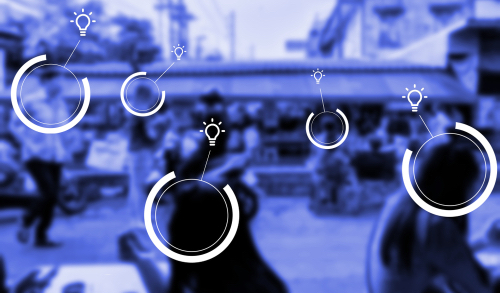Jacob Colman, Strategist at M&C Saatchi, addresses the challenges that marketers face in gathering human insights in a post-Covid world.
This time last year, I was sat in a Costa (one of our clients) having a coffee with customers. Prompted by cues from the environment, the customers provided rich insight into their interaction with the brand. They gave us a depth of understanding no spreadsheet could provide.
But under Covid guidelines, getting access to customers in this way is near impossible. Even the simple method of chatting to a few random people in a store to break out of your marketing bubble is tricky. People’s fear of infection means that popping out of shopping aisles and asking ‘why did you pick that toothpaste’ has become somewhat frowned upon.
The new lockdown in England may (hopefully) only be for a month. But with 74% of the advertising industry already working from home (YouGov, 2020) and the rule of six unlikely to change, we rarely have the opportunity to mix with new people and uncover new ideas. We’re in danger of being increasingly removed from reality, from what customers think, feel and actually want.
Making decisions based on more than just spreadsheets
In a world where we have access to more data than ever before, you’d think we should be well informed. However, the temptation now is to hide behind the inhuman and often inaccurate data points that are being collected en masse. The easy option is to make decisions based on Excel cells, rather than on an understanding of real people. We still need to think beyond the data and understand the mindsets and motivations behind each purchase.
Luckily as our industry exists increasingly at home, the nation has moved increasingly online. UK adults are spending an average of 17 minutes more online per day than they did in 2018 (Ofcom, 2020), Zoom has become a verb with its reach growing by almost 2,000% (Ofcom, 2020), and globally, 43% of us are spending more time on social media than at the start of the year (M&C Saatchi x GWI, 2020).
So, while we can’t enjoy a coffee with customers, we can Zoom into the intimate world of their living room. Whilst it’s harder for a marketing exec from London to come across the average KFC customer, social can provide the goods to create celebrated ads. And with customers spending more time video calling and filming themselves, mobile ethnography has moved from a clunky and awkward experience into something relatively normal. We need to harness these opportunities to understand people through digital channels.
These actions can be quick, often proving valuable insight in a matter of days– but days are precious, and we need to work together to find the time. As trading conditions become tougher, the incremental wins we can gain from a deeper understanding of people could be the key to survival.
I’m not bashing data. Reading the patterns of change in Costa’s customers has been vital in recapturing significantly more of their customers than market average. But where our real value as marketers comes from is not just understanding what customers are doing differently in this Covid world, it’s understanding why they are behaving as they do. It’s this why that helps us make relevant and valuable experiences and comms. It’s this why that is only uncovered through deeper investigation of the people behind the data.
Getting to Grips with Market Research and Insight Best Practice Guide




